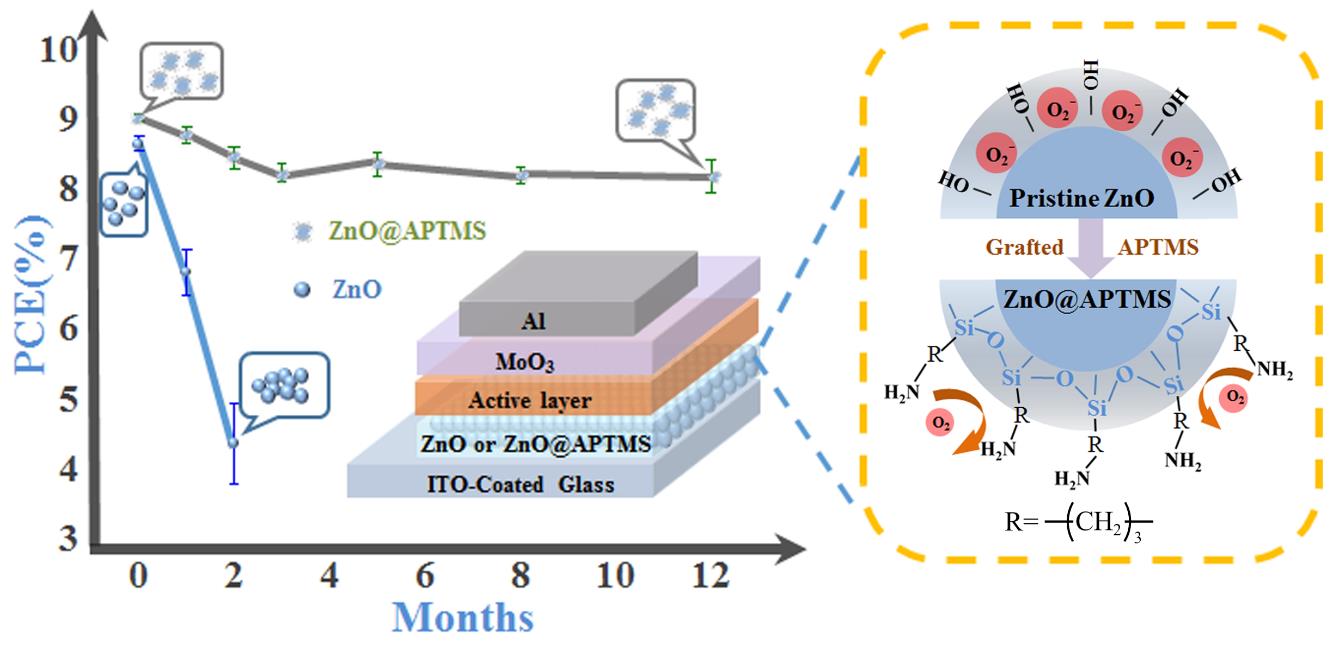Zinc oxide (ZnO) nanoparticles have been widely used in organic solar cells as the electron- transport layers (ETLs) materials, and are considered to be the candidate with the most potentials for ETLs in roll-to-roll (R2R) printed photovoltaics. However, the tendency of the nanoparticles to aggregate reduces the stability of the metal oxides inks and creates many surface defects, which is a major barrier to its printing application.
A research group led by Prof. MA ChangQi from the Suzhou Institute of Nano-tech and Nano-bionics (SINANO) prepared 3-aminopropyltrimethoxysilane (APTMS)-capped ZnO (ZnO@APTMS) nanoparticles dispersions through surface ligand exchange exhibited excellent stability in air for at least one year without any aggregation.
Meanwhile, the device with the ZnO@APTMS ETL, the better stability than pure ZnO ETL device was due to the suppressing the formation of adsorbed oxygen after capped with APTMS in the ambient atmosphere. The ZnO based device decayed to only 20% of the initial value when stored in ambient at about 60% humidity after 30 days, while the ZnO@APTMS could maintain about 80%.
This work, published in ACS NANO, demonstrated the distinct advantages of this ZnO@APTMS ETL as a potential buffer layer for printed organic electronics.
This work is financially supported by the National Natural Science Foundation of China, the Suzhou Science and Technology Project, Ministry of Science and Technology of China, the Strategic Priority Research Program of the Chinese Academy of Sciences, and the Research Project of NANO-X Workstation, SINANO, CAS, the National Key Research and Development Program of China.

Figure 1. Evolution of device performance of the PTB7-Th:PC71BM solar cells using ZnO or ZnO@APTMS nanoparticles that were stored in air for different time.(Image by SINANO)
Contact information:
Prof.MA Changqi, Suzhou institute of Nano-Tech and Nano-Bionic, Chinese Academy of Sciences.
Email:cqma2011@sinano.ac.cn
Reference:https://pubs.acs.org/doi/abs/10.1021/acsnano.8b01178

